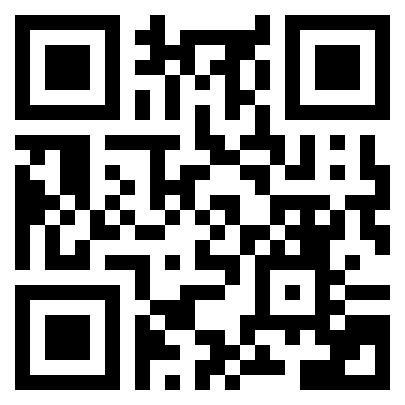- BTEC Level 3 Unit 13 Introduction to Criminology Assignment Brief
- BTEC International Level 3 Unit 8 Human Resources Assignment Brief 2026
- BTEC Level 4 Unit 9 Entrepreneurial Ventures Assignment Brief 2026
- COM6013 Cybersecurity and AI Dissertation Project Assessment Brief 2026
- ACC4043-N Contemporary Management In Operations And Finance ECA 2026
- BMGT2300 Digital Content Systems and Ecommerce Assignment 1 Brief 2026
- BMGT3000 Digital and Social Media Marketing Assignment 1 Brief 2026
- MN5619 Research Project Assessment Brief 2026 | Brunel University
- U14521 Relationships and Sex Education Assessment 2 Brief 2026
- BMAF004-20 Introduction to Business and Management Assessment Brief
- BUSI48957 Consultancy Experience Project Assessment Brief | NTU
- MS70122E Data Science Insights for Decision Making Assignment 2 2026
- MS70122E Data Science Insights for Decision Making Assignment 1
- BEM3066 Marketing Issues and Trends Assignment 1 Brief
- CT6034 Advanced Networking & Security Assignment Brief | UoG
- COMP11082 Incident Response Assessment Brief 2025/26 | UWS
- CSYM025 Visual Object Software PJ1 Assessment Brief 2026 | UON
- LAW2105 Tort Assessment Coursework Brief 2026 | Middlesex University
- BUSI607 International Business Strategy Assessment 1 Brief 2026
- PSY-N201-0 Cognitive Psychology and Neuroscience Level 5 Assessment Brief
B00807007 Retail Theory Evaluation Assignment 1: Cyclical, Non‑Cyclical Models & Modern Retail Strategies
| University | University of the Arts London |
| Subject | B00807007 Theories of Retail Change |
Aims
Introduction
Retail has always evolved, but the speed of transformation in recent years has been remarkable. Due to digital disruption, evolving customer expectations, and worldwide events such as the COVID-19 pandemic (World Health Organization, 2025), retailers have needed to reassess their operations, engage with consumers, and maintain their competitiveness. These advancements prompt an important inquiry: how effectively do conventional theories continue to clarify the evolution of retail?
This paper examines two primary categories of retail transformation theories that have influenced our comprehension of the sector. The initial category—cyclical theories such as the Wheel of Retailing and the Retail Life Cycle—indicates that retail adheres to a recognizable sequence of phases. The second group—non-cyclical theories, encompassing Environmental, Conflict, and Evolutionary models—adopts a more dynamic perspective, emphasizing the role of external influences in driving change. Utilizing academic references like the Fernie textbook and Stephen Brown’s (1995) analysis of retail theory, the essay examines the relevance of these models in the current dynamic landscape.
This will analyse the relevance of various theories by merging scholarly knowledge with practical instances—from companies such as Amazon, Zara, and Tesco—assessing their utility, limitations, and the necessity for new perspectives to better understand the ongoing evolution of retail. Key academic sources including Fernie (latest edition), Stephen Brown (1995), and recent journal literature will be used to support the analysis.
These provide both foundational theory and critical perspectives on retail change.
Do You Need Assignment of This Question
Overview of theories
An outline of retail
Retail has impacted the retail market greatly, especially over the past years and has been around for years. Retailing has been defined as ‘the set of business activities that adds value to the products and services sold to consumers for their personal or family use (Levy and Weitz 2004) Without retail, there would be no sales of goods, things would be free and theories of retail wouldn’t exist. Retail has changed throughout the years.
“In essence, retail change has been driven in the past by the interaction of consumer, retailer and government: in the 1990s and 2000s the role of technology became increasingly important as an agent of change.”
“Almost all our understanding of innovation comes from studying manufacturing firms, with the focus being on technical and mainly radical innovations.”
Tether (2005) indicates that our understanding of innovation largely stems from analyzing manufacturing sectors, where attention typically centers on significant technological advancements. Although that approach may be effective for factories and product creation, it doesn’t truly reflect the dynamics of innovation in retail. Retailers frequently implement smaller, continuous adjustments—such as enhancing customer service or utilizing technology to simplify the shopping experience. In the current rapid retail environment, influenced by digital technologies, increasing customer demands, and the transition to online and physical shopping experiences, innovation focuses more on continuous adaptation than on creating something completely original. Therefore, if we depend solely on manufacturing-focused concepts of innovation, we may overlook the daily adjustments that truly enhance retailers’ competitiveness today.
“As stated by McNair (1958), new retail formats like department stores and supermarkets began as low-cost, narrow-margin businesses that gradually improved their offerings. Ultimately, they developed into expensive, high-profit organizations… This, consequently, paved the path for the subsequent low-cost innovator: thus, the ‘wheel’ turned.”
Within the retail sector, over recent years there have been many significant changes, influenced by many things, such as technology (digital transformation) and innovating to the consumers expectations.
“Retail platform driven by the surge of the platform economy, have experienced rapid growth in recent years”
“There are many different strategies to reel in a consumer into one’s business within the retail world, however when competition may evolve (or introduce something new to the market) this may leave other businesses feeling uneasy, not knowing what to do.”
Retail is defined as the activity of selling goods to the public, usually in shops (Cambridge Dictionary,1995). According to Musso and Druica
“Evolution in consumer lifestyle and lifecycle that pushes retailers (traditional and newcomer) to innovate. In doing so, they answer more precisely emerging needs and wants towards providing customer delight.”
The above quote explains that retail is always innovating for consumers in modern times, however, when having a deeper look into the retail system there’re are different types of theories involved. This essay will explore into these theories and evaluate their significance in the current competitive retail world.
“Services have long had a ‘Cinderella’ status … being neglected and marginal”
Wheel of theory
The Wheel of Retailing, introduced by (McNair in 1931), describes how retailers initially begin with low prices and basic services before progressively transitioning to more sophisticated, higher-priced businesses over time. Although this concept seemed very logical when it was initially presented, it doesn’t entirely hold true in the rapidly evolving digital retail landscape of today. Consider Amazon; instead of adhering to this conventional route, it launched in the market providing low prices and exceptional convenience from the very beginning. This method contests the notion that retailers are required to progress through a defined, linear sequence, demonstrating how the retail environment has changed in ways the original theory failed to predict.
Buy Answer of This Assessment & Raise Your Grades
Real life cycle
Retail firms go through predictable stages of growth and decline, but it may fail to account for the speed of disruption and technological innovation that modern retail faces today.
Synthesis of the Wheel of Retailing and Retail Life Cycle Theory
To contradict the theories
Contradict definition- deny the truth of (a statement) by asserting the opposite. -assert the opposite of a statement made by (someone).
Core theories of retail change (cyclical and non-cyclical)
Within the theories of retail, there are two categories of types of theories. The two types are cyclical and non-cyclical. To begin with the definition of cyclical theories will be presented, then explained
“Cyclic theories hypothesize the retail environment and competitive practices of retailers follow a slightly, repeating pattern, with clear identifiable stages. The cyclical models assume that retailers pass through before-known stages and follow a certain cycle.”
The above reference indicates that the retail enviroment/competitive use a predictible repeating pattern at each stage, however to contradict this view, retail factors are nowadays shaped by unpredictable factors such as technology and consumer bahaviours. Technology factors and consumer behaviours do not comprehend to fixed cycles.
“Retailers typically exist in one of four segments: innovative, big middle, low-price, and ‘in trouble'”
Cyclic theories suggest that the retail environment and competitive practices follow a predictable, repeating pattern with identifiable stages. However, this view can be contradicted by the fact that retail dynamics are often shaped by unpredictable factors such as technological advances, economic shifts, and changing consumer behaviors, which do not adhere to fixed cycles. Rather than following a linear progression, retailers often experience non-linear development influenced by innovation and external disruptions. In today’s fast-paced market, success depends more on adaptability and responsiveness to new trends, making the concept of a rigid cycle less applicable. Additionally, the diversity of retail sectors means that different segments may evolve through unique patterns, further challenging the idea of a uniform cycle.
To explain the above definition, the cyclic theories comply the retail world competes, whilst following a repetitive pattern. The retailers go through highs and lows of cycle stages. There are cyclical theories that repeat within themselves. The above statement is very true, as a startup entrepreneur there are many highs and lows within the business, take Lidl for example. The start of the business, even in comparison to recent changes within the company, there are highs and lows in profit margins, customer satisfaction and competition.
Cyclic theories suggest that the retail world, and how stores compete with each other, tends to follow a repeating pattern over time. This means that retailers go through similar stages or phases in a cycle, like ups and downs, and these stages can be recognized and predicted. Basically, the idea is that retailers go through cycles that repeat, with each cycle having certain steps or stages that happen in order.
Moving on from cyclical theories there are non-cyclical thories, “Cyclical companies tend to see profits rise along with the rest of the economy, and all during periods of recession.”
technological advancements
Throughout history and in modern days there are many advancements within the theory of retail, to derive them within the cyclical theory
Wheel of retailing theory
Within the theories of retail, the wheel of retailing theory is the most popular.
“Among institution based theories the wheel of retailing is the most famous.”
1.2 Introducing the evaluation of theories
This essay will examine and critically evaluate key theories, including the wheel of retailing, the Assortment theory and the Retail Life Cycle Theory. By assessing their relevance and limitations, the discussion will highlight how these theories apply to modern times within the competitive retail environment. The goal is to emphasize the importance of combining historical insights with current trends to effectively navigate the challenges and opportunities facing the retail sector today.
There are three retailing theories, they illustrate the progression of different retail formats as they emerge, emerge and develop; there are cyclical, conflict and environmental theories. The theories being evaluated are as follows:
- Enviromental theory
- Retail Life Cycle
- Market Structure Theory
- Innovation Diffusion Theory
Overview of theories of retail change
Critically Evaluate Theories of Retail Change
- Identify Theories: Start by identifying key theories related to retail change, such as the Retail Life Cycle Theory, Market Structure Theory, and Innovation Diffusion Theory.
- Analysis: For each theory, examine its main ideas, strengths, and weaknesses. Consider questions like:
- How well does this theory explain changes in retail?
- Are there limitations or aspects it doesn’t cover?
- How has the theory held up over time?
“Ecologically-friendly products and services offer windows of opportunity because they provide new sources of profitability and growth, especially in mature markets.”
2. Assess Their Relevance in Today’s Retail Competitive Environment
- Current Context: Analyse how relevant these theories are in light of recent trends in retail, such as:
- The rise of e-commerce and online shopping.
- The impact of technology and data analytics.
- Shifts in consumer behaviour and preferences (like sustainability and experiential shopping).
- Practical Examples: Use real-world examples to illustrate how these theories apply (or don’t apply) to today’s retail landscape.
Are You Looking for Answer of This Assignment or Essay
Overall Goal
The goal is to provide a thoughtful critique that shows your understanding of both the theories and the current retail environment. You’ll want to connect the dots between past theories and modern challenges and opportunities in retail.
If you have specific theories or concepts in mind or if you need more details on a particular aspect, feel free to ask
Cyclic theories hypothesize the retail environment and competitive practices of retailers will follow a slightly, repeating pattern, with clear identifiable stages. The cyclical models assume that retailers pass through before-known stages and follow a certain cycle.
This cycle is at (book-the changing role of retailing theory)
-3)Wheel of retailing therapy(mcnair,1931)- The retailer opens up their business, starting off with lower prices. The business also starts off with lower business costs within the business(not related to the consumer).
“It captures a significant number of customers with this value proposition.”
explain that there are two types of theories when it comes to the change within retail. One of which is called Cyclical theory, the other theory is called Non cyclical.
Reference list
Brynjolfsson, E. and Smith, M.D., 2000. Frictionless Commerce? A Comparison of Internet and Conventional Retailers. Management Science, 46(4), pp.563-585.
Fernie, J., Fernie, S. & Moore, C.M. (2015) Principles of retailing. Publishe: Routledge; 2nd edition
Levy, M. & Weitz, B.A. (year) Retailing management. Publisher.
Jones, M. (2021). Innovation in Retail: The Role of Technology in the Modern Marketplace. 2nd ed. London: Routledge.
Bell, D. and Lattin, J. (1978). The Retail Life Cycle. Journal of Retailing, 54(3), pp. 44-58.
Ojo, Dr & Isiramen, Monday & Elaho, Omoruyi. (2021). THE CHANGING ROLE OF RETAILING THEORY IN AN EXMERGING ECONOMY. 5. 66-73.
Example for above (journal reference) Lawson, C.L. and Katz, J. (2004) Restorative justice: an alternative approach to juvenile crime. Journal of Socio-Economics, 33 (2), 175-188.
https://www.researchgate.net/publication/358581810_THE_CHANGING_ROLE_OF_RETAILING_THEORY_IN_AN_EXMERGING_ECONOMY
Brynjolfsson, E., & Smith, M. D. (2000). Frictionless Commerce? A Comparison of Internet and Conventional Retailers. Management Science, 46(4), 563-585.Hodgson, P. (2020). The Evolution of Retail: Beyond Traditional Models. Journal of Retail and Consumer Services, 53, 101974.
Levy, M., & Weitz, B. A. (2007). Retailing Management (7th ed.). McGraw-Hill.
McNair, M. P. (1958). The Wheel of Retailing. Harvard Business Review, 36(6), 106-110.
World Health Organization (2025). Coronavirus disease (COVID-19) pandemic. [online] World Health Organization. Available at: https://www.who.int/europe/emergencies/situations/covid-19.
MILES, I. (2000). SERVICES INNOVATION: COMING OF AGE IN THE KNOWLEDGE-BASED ECONOMY. International Journal of Innovation Management, 04(04), pp.371–389. doi:https://doi.org/10.1142/s1363919600000202.
Tether, B.S. (2005). Do Services Innovate (Differently)? Insights from the European Innobarometer Survey. Industry & Innovation, 12(2), pp.153–184. doi:https://doi.org/10.1080/13662710500087891.
Brown, S. (1991). The Wheel of Retailing: Still Rollin’ After All These Years. The Wheel of Retailing: Still Rollin’After All These Years, 5, pp.179–198.
Are You Looking for Answer of This Assignment or Essay
Do you want to complete an evaluation of the theories of retail
change assignment? Hire a retail management assignment helper from UK Assignment Help now and get rid of your assignment worries. Here, you get high-quality, original content without compromising on plagiarism.




